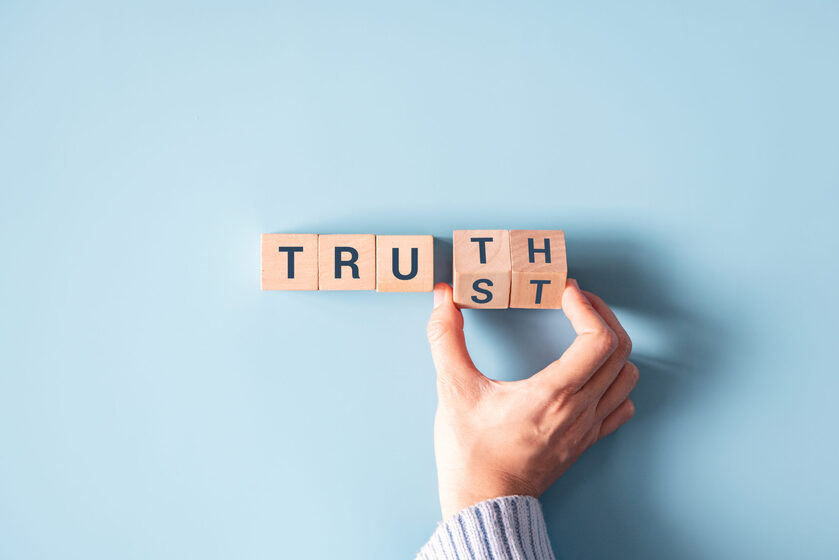
By Linda Massi
4 minute read
Linda Massi By Linda Massi
4 minute read
At Delogue, we connect brands and suppliers to create transparency and sustainability. Lisa Herrmann, one of our team members, shares her views on supplier collaboration – a vital solution to improve the whole industry.
“No matter what kind of relationship it is, whether professional or personal, romantic or friendship, the base of everything is on one thing: trust. Something easy to grasp in connection to a good relationship isn’t as obvious in the supply chain,” Lisa says.
Why is there an inherent trust issue? Is it because of the language barrier? The distance? The fact that the relationship in question is far from being monogamous?
In this piece, we explore how the industry can achieve transparency and sustainability beyond tier 1.
How It Started – The Inherent Trust Issue in the Supply Chain
“During the last 30 years, fashion companies have been outsourcing all their production processes to more specialized suppliers,” Lisa explains. “They do it to achieve competitive price advantages and reach economies of scale and scope. But, by outsourcing more and more processes, we're creating something that is not a chain anymore but a web of relationships.”
This scenario forms a disintegrated supply chain with endless subcontractors and invisible actors contributing to the creation of the product. “The vast outsourcing generates increased complexity, making it difficult to maintain personal relationships and build trust,” contends Lisa.
And there is more at play. The industry is responsible for the arm's-length relationships between brands and suppliers. The continuous outsourcing creates a competitive war that culminates in an immense power imbalance.
“The power shift is something that became very visible during the pandemic,” Lisa recalls. “Big global fashion brands canceled orders. And the suppliers had to cope with the consequences of that.”
The relationships have become transactional. They don’t last more than one fashion season, but at the same time, they are characterized by strong mutual dependencies and a high dose of mistrust.
If this was your friend’s relationship and they asked you for advice you will probably say: 'Run. It's quite toxic.'
How Is It Going – Transparency Beyond Tier 1?
In recent years, the industry has moved towards a more sustainable and transparent supply chain. At least, that’s the trend on the surface. Activism is forcing brands to share their data, and there’s more disclosure expected from customers. Even though this is undoubtedly a positive, Lisa thinks there’s a lot more to do.
“When you look at what is being disclosed, you see that information is quite limited and does not encompass the full supply chain.”
The majority of brands are publishing only their first-tier manufacturers. These are the ones they have direct contractual obligations with. But they are not disclosing information about raw material suppliers. And these are are the ones that have the most severe impact on human and environmental rights.
It's kind of like: 'Okay I don't know what's happening here so I'm not accountable for it' – but that's not the case.
Future Outlook – Supplier Collaboration to Drive Sustainability and Transparency
So, is there a way to create more transparency and sustainability? Lisa considers the solution resides in engaging more with suppliers.
“First of all, it is crucial to shift away from the transactional model to an actual collaborative partnership model. It is empirically proven that when you build trust with your partners and especially with your suppliers, they are more willing to disclose data and pursue sustainability goals that you have created together with them as a company.”
Long-term commitment is the key to a more collaborative relationship. It will bring balance to the power disparity that has characterized the supply chain for a long time. To create more transparency, Lisa confides in co-investments in digitalization and technology. “Building the infrastructure is essential to drive transparency based on real data and not only information that looks nice in a marketing report.”
Digital infrastructure keeps suppliers closer, regardless of language and cultural differences. It increases communication, and in turn, gives trust and transparency.
Learn how a PLM can help your brand become more sustainable.
“These two blocks, trust and co-investments together can create vast transparency and accountability for all the stages of the fashion supply chain.” Lisa ensures it would be a win-win situation for both parties. “Think of the reputational advantages for fashion brands. Showing what they can actually do and are doing would be a better way to tackle the sustainable trend, instead of making promises they can't keep.”
The fashion industry has never boasted a positive image. Unrealistic beauty standards, rampant copycats, and now sustainable and humanitarian issues have branded it deeper than a monogrammed bag. To overcome the damage, a simple solution is required: put down the axes and work together.
READ MORE: The value of collaborating and building strong partnerships with suppliers.